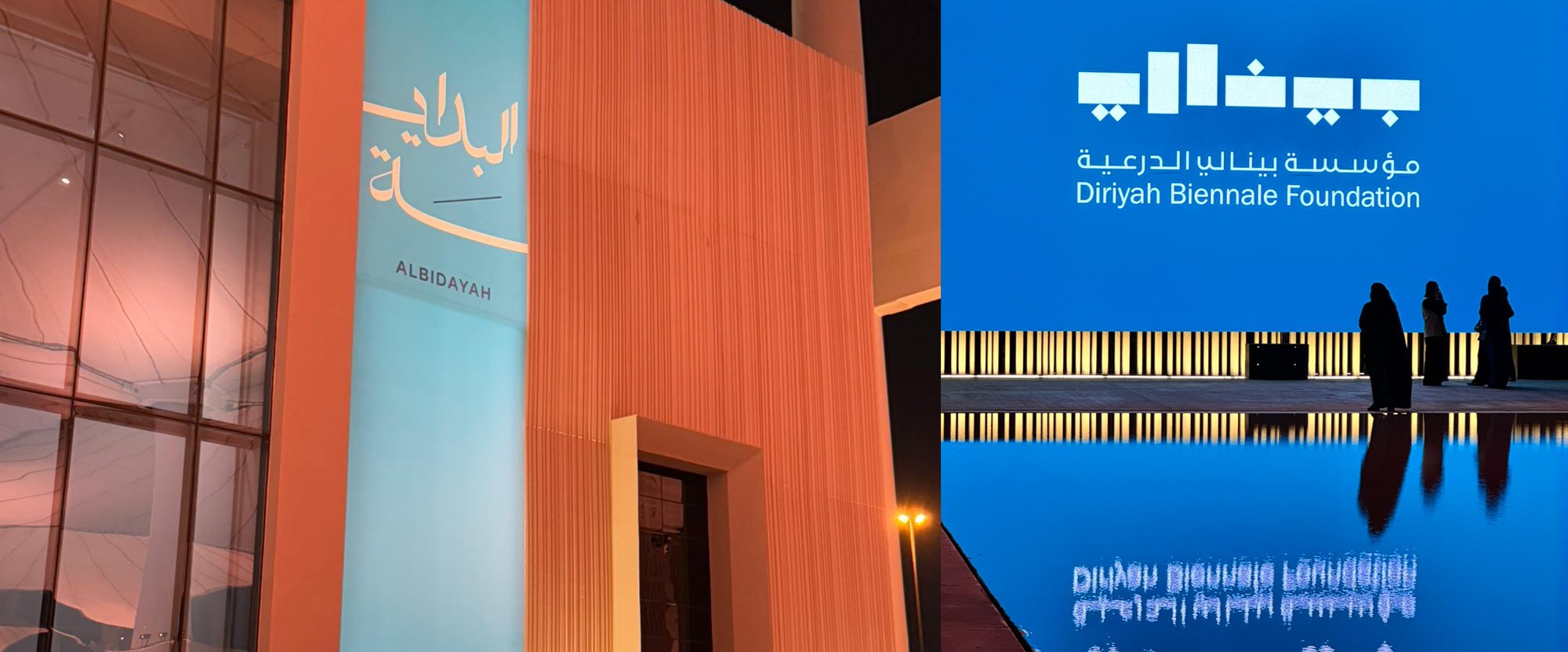

09/02/2025 General News, Latest News
Our head of Islamic and Indian Art, Beatrice Campi, just returned from a trip to Jeddah, Saudi Arabia, for the opening of the Islamic Arts Biennale! The second of its kind, the Biennale is titled ‘And All That Is In Between’ (a sentence repeated over twenty times in the Holy Qur'an) and between January 25th and May 25th will be open to the public. The site of the exhibition itself spans seven pavilions and a hundred thousand square meters, showcasing artists and artworks from across the globe, and early reviews have been glowing. We sat down with Beatrice to hear her about her thoughts and highlights…
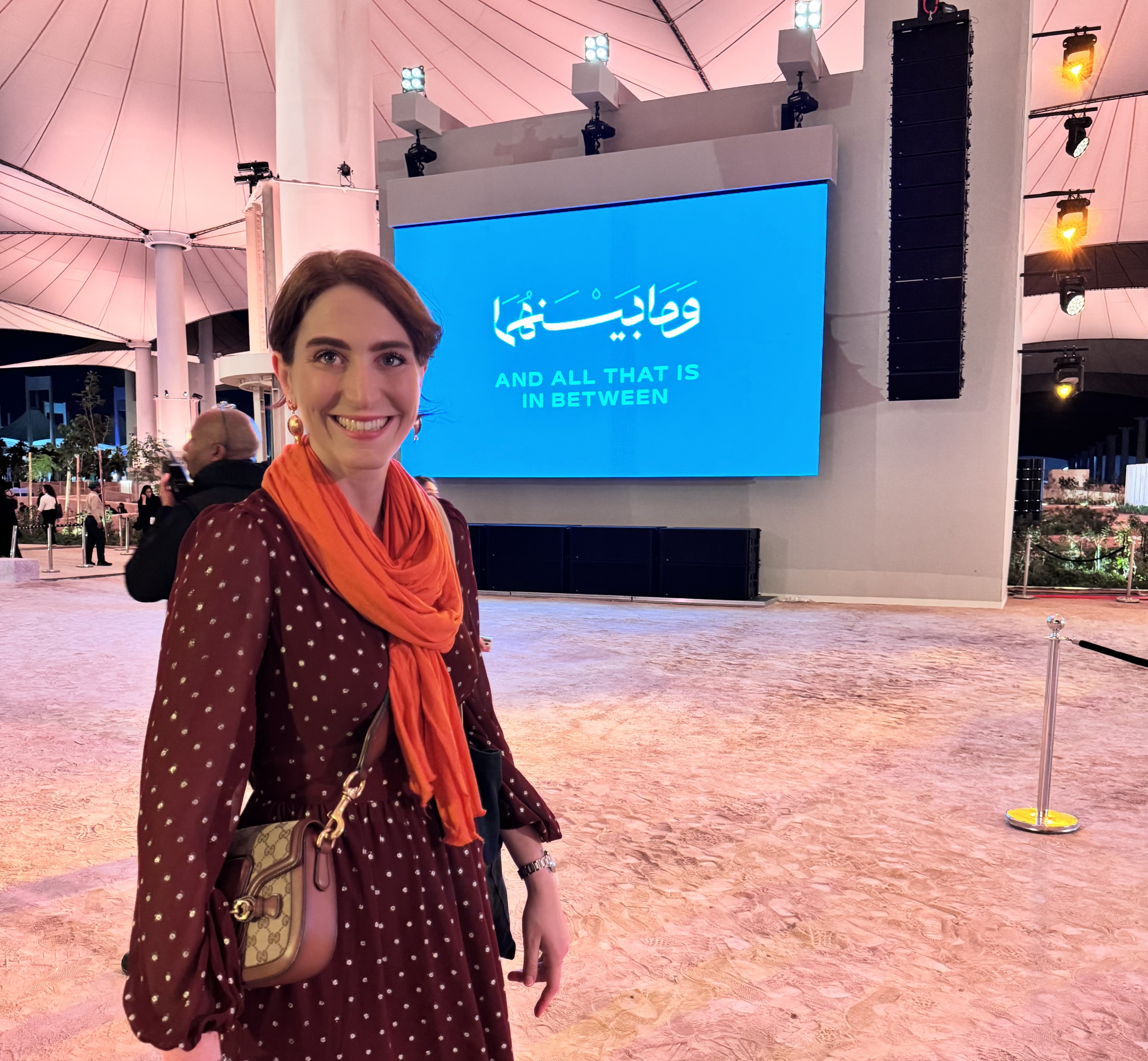
(Beatrice Campi, Head of Islamic and Asian Art, at the Biennale’s opening event)
What were your thoughts and expectations heading into this year’s Biennale?
After the considerable success of the last edition, expectations were generally very high. One particular aspect I was interested in assessing was how successfully they would blend antique and contemporary artworks- because of course we know this is a key point of the Islamic Arts Biennale. If you compare it with other art fairs and Biennales with a yearly or bi-yearly calendar cycle, they tend to keep the antiquities on one side, and the contemporary on the other.
So yes, there was overall a very strong focus on antiquities, which due to my studies and profession I am naturally a bit biased towards and really enjoyed. What was most interesting though was how the curatorial team and artistic directors drew connections between the contemporary works and the antiquities. Very often they would start with something antique, so upon entering a pavilion you would immediately be met with antiquities and classical art, and then there would be installations in between cabinets, on the walls or in the general vicinity that responded to them in some way.
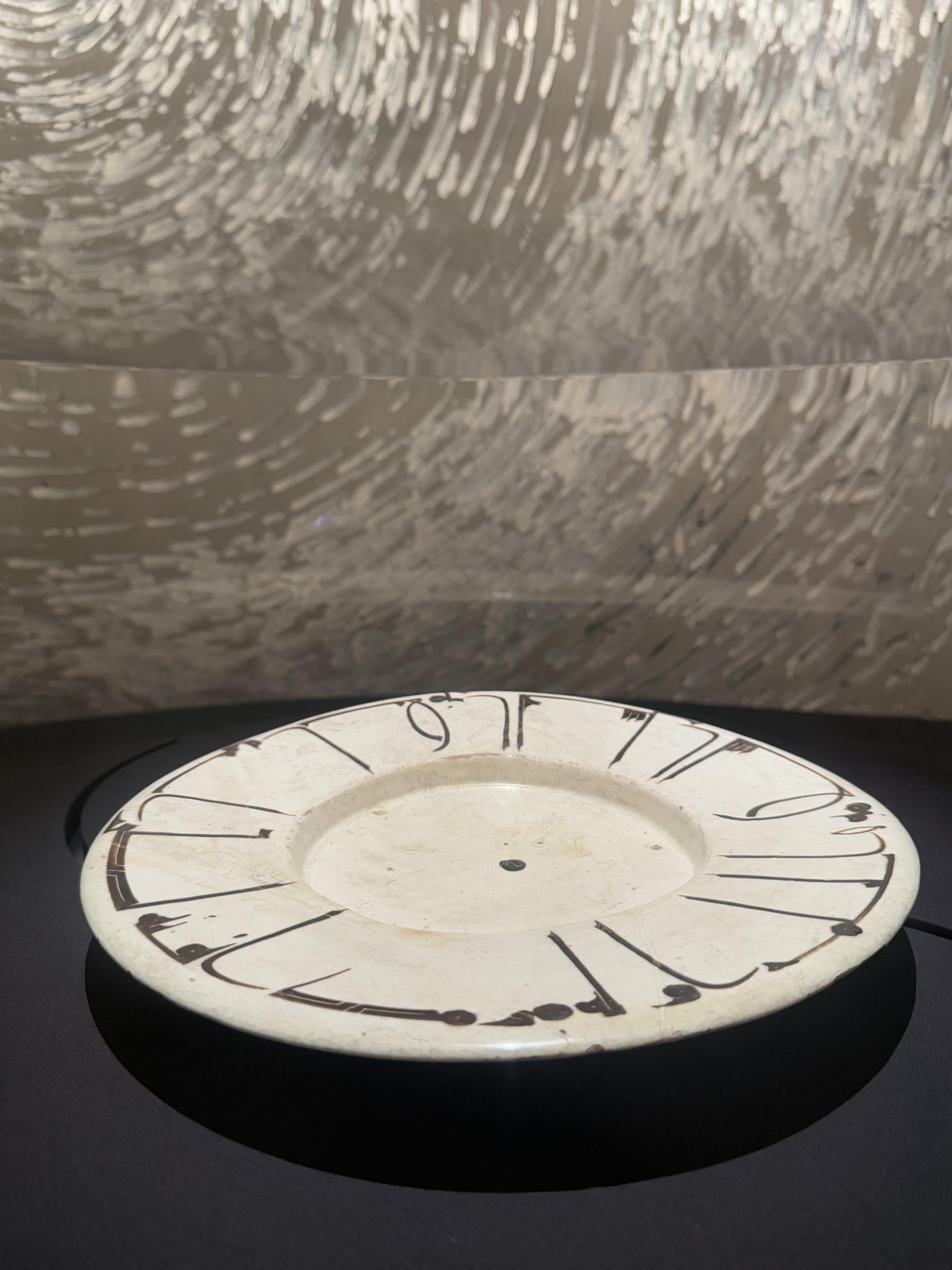
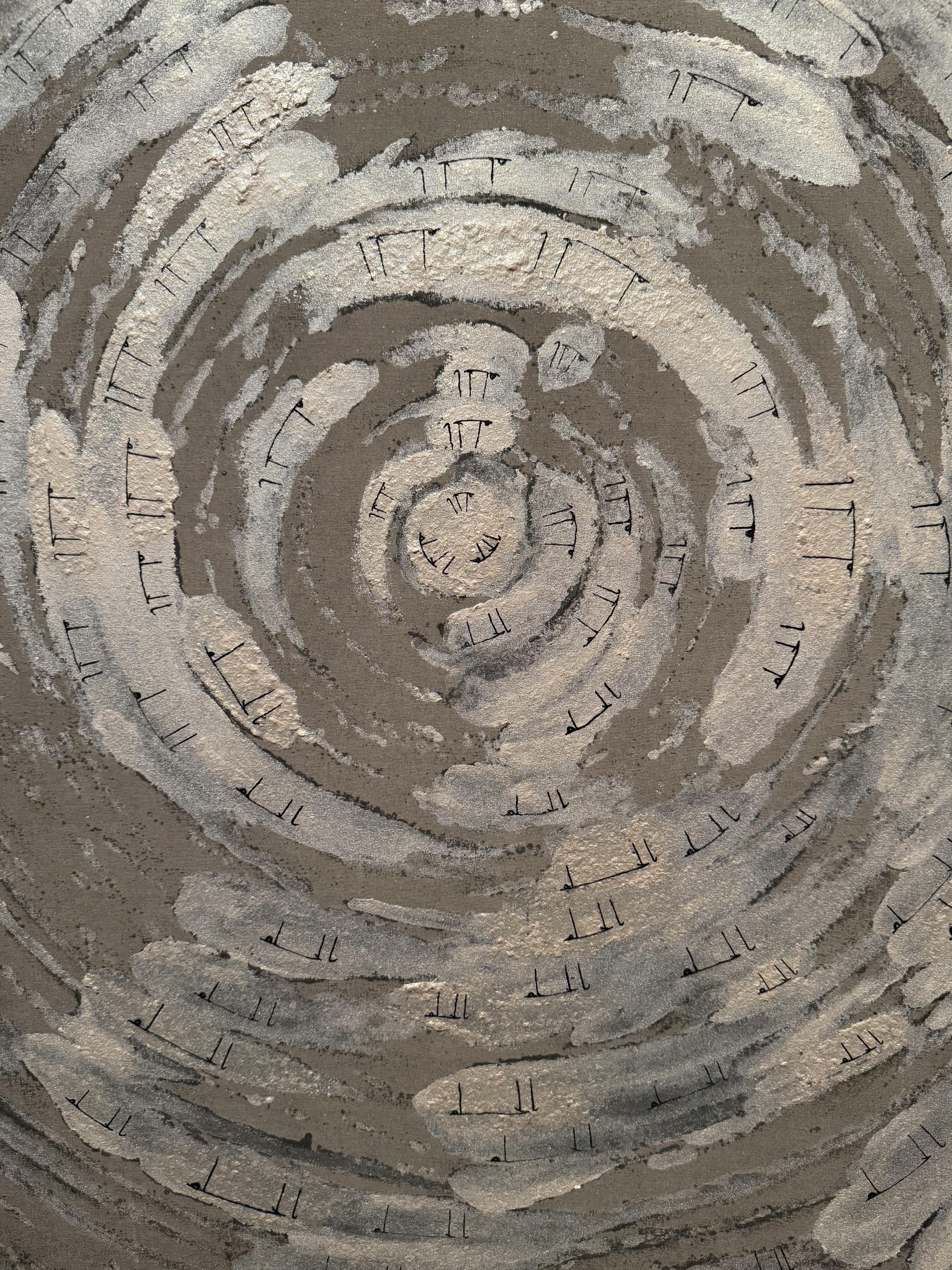
(A tenth-century Samanid charger, framed by Charwei Tsai's (b.1980) corresponding contemporary work That Which At First Tastes Bitter)
For example, in the second pavilion - Al Madar (The Orbit), a transitional corridor displayed a fantastic tenth century Samanid charger, and surrounding that on the walls there was an installation where brushstrokes that looked like raindrops had created a vortex reminiscent of silver fishes circling in a body of water. Referring back to the charger, which had a sense of bold, circular motion in its calligraphy that traced its edges, it was clear that the contemporary artist had replicated this effect in response. Exchanges like this meant that in one single room you could have modern art and antiques that talk to each other in a very complimentary way. That’s what is very special about this Biennale.
How did this year’s Biennale compare to the inaugural 2023 edition?
I was not personally able to attend the first edition, but the art crowd was curious to see whether this Biennale would merely replicate the success of the previous one or if it would be able to build upon it. In discussions I had, it seems the consensus is that it has indeed been able to develop its formula and continue to creatively expand its offering.
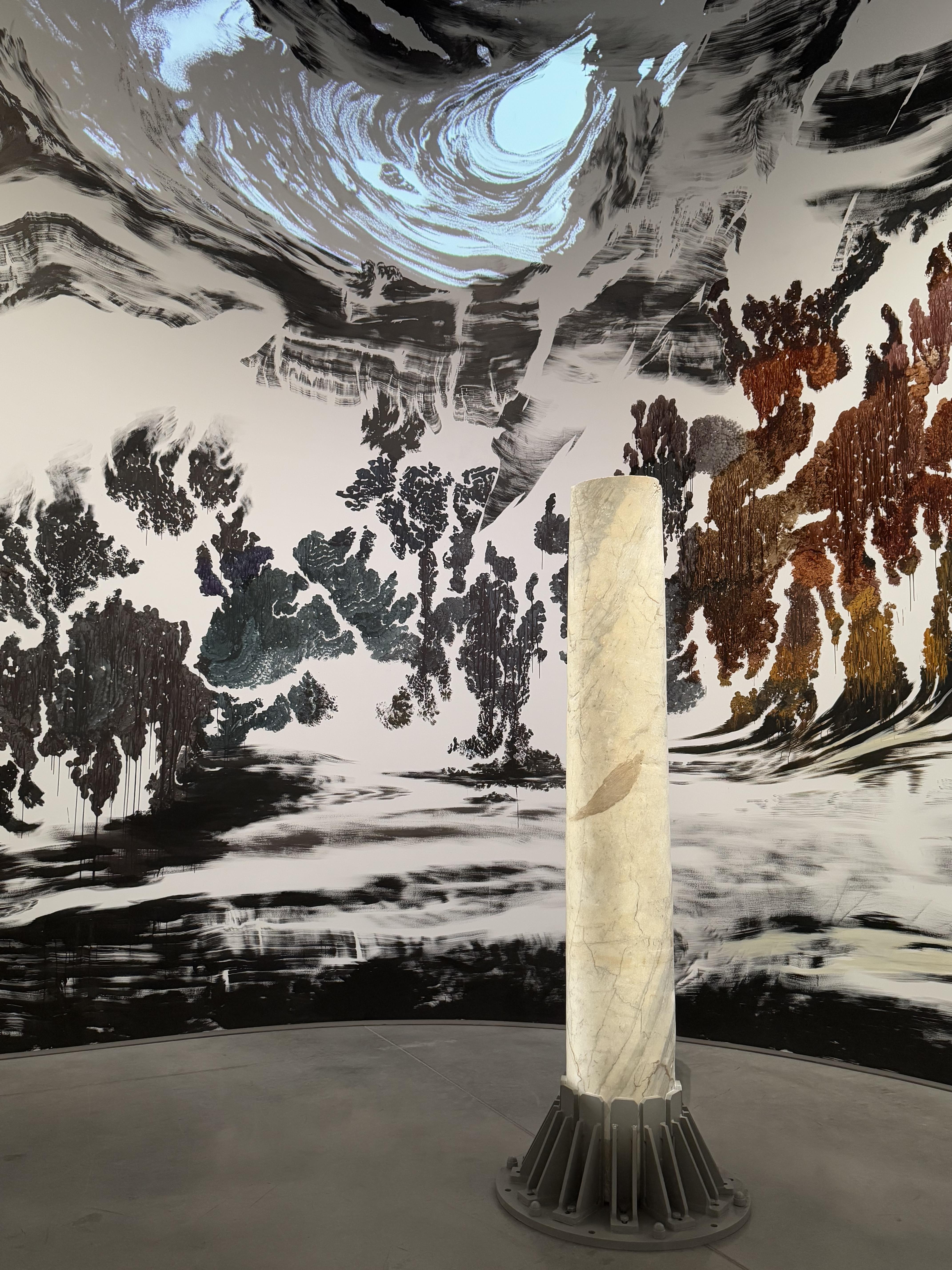
(An installation featuring early marble columns from Medina, with the accompanying work Between Each Sky by Abdelkader Benchamma (b.1975))
Besides the blending of antique and contemporary, were there any other curatorial details that you found particularly impressive?
I had a very good chat with a representative of the architectural studio in charge of organising the design and space of the pavilions, OMA, based in Rotterdam. The team wanted to create spaces that both allowed people to feel part of a community, and also tied into this year’s theme of exploring the sacred. This meant considering how to recreate a sense of entering a sacred place, as well as bringing a meditative quality that would encourage visitors to linger and feel safe and welcome in the environment.
The most effective way in which they did this was by using a lot of fabric: there were no harsh walls, there were instead tall panels- a bit like Japanese screens, if you like- that created pathways for visitors. Because of this design, it felt very organic or even sinuous, and did indeed really make you want to linger there. The lack of harsh divisions and walls created a real sense of flow. So this part of the Biennale’s design especially showed how much thought had gone into considering the overall theme, rather than just creating a blockbuster event.
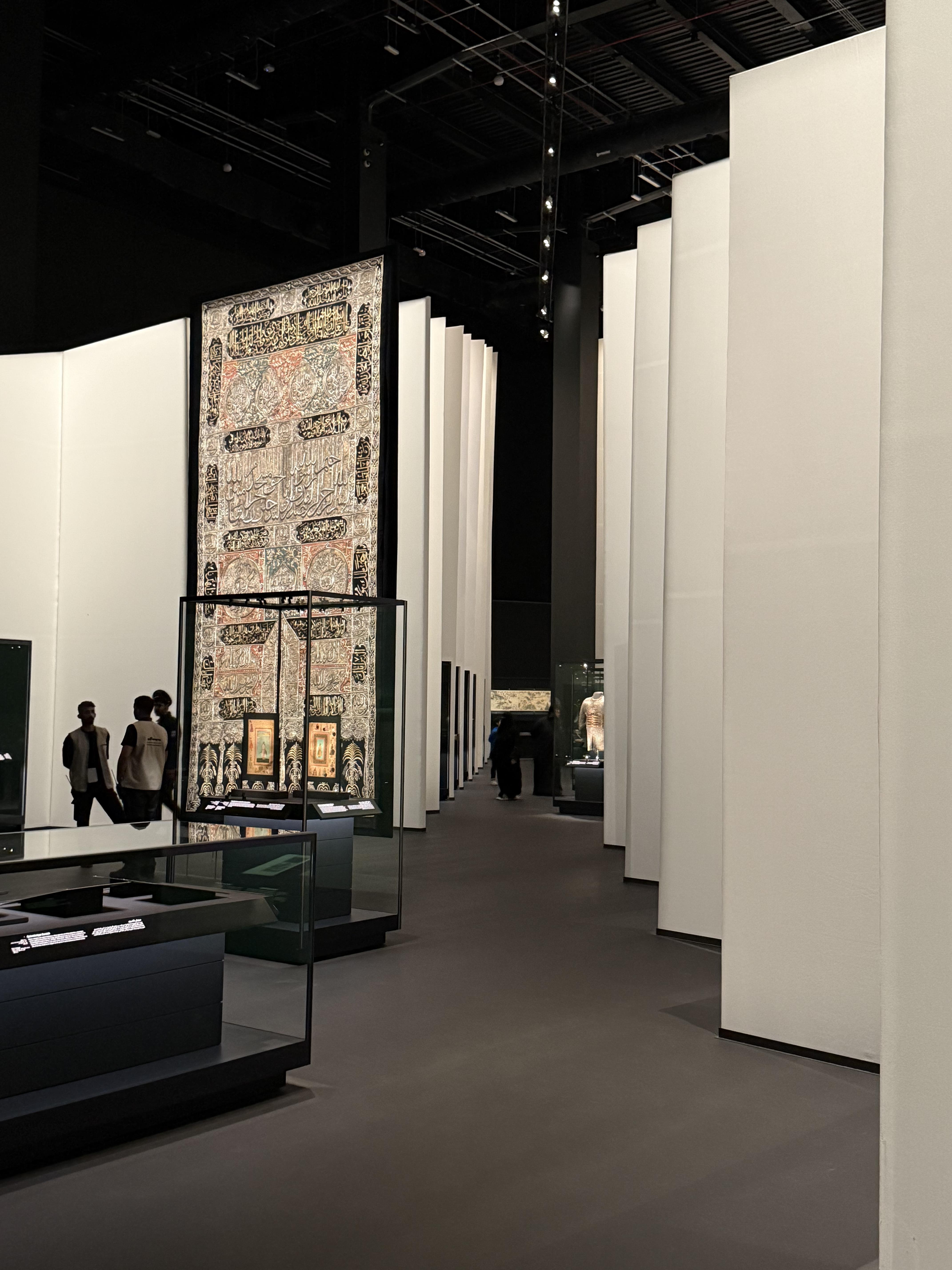
("There were instead tall panels- a bit like Japanese screens, if you like- that created pathways for visitors")
If you had to recommend one must-see installation, what would it be?
Something which really moved me, and I’m not Muslim, was the Kiswah. The sight of the massive, uncut gold-embroidered black fabric panel that has covered Ka’aba in 2024 was exceptional. Julian Raby, the artistic director, on a private curator’s tour showed exactly the area where the pilgrims touched the fabric. That specific area had that sheen, as fabric does when it gets worn, which stood out from the rest of the Kiswah. To me, that too really spoke about the sacred, and the rituals of religion- where it is not all about the teachings and ideologies, but also how community comes together and feels strongly for something. The Kiswah is also of course massive in size, so was immediately visually impressive.
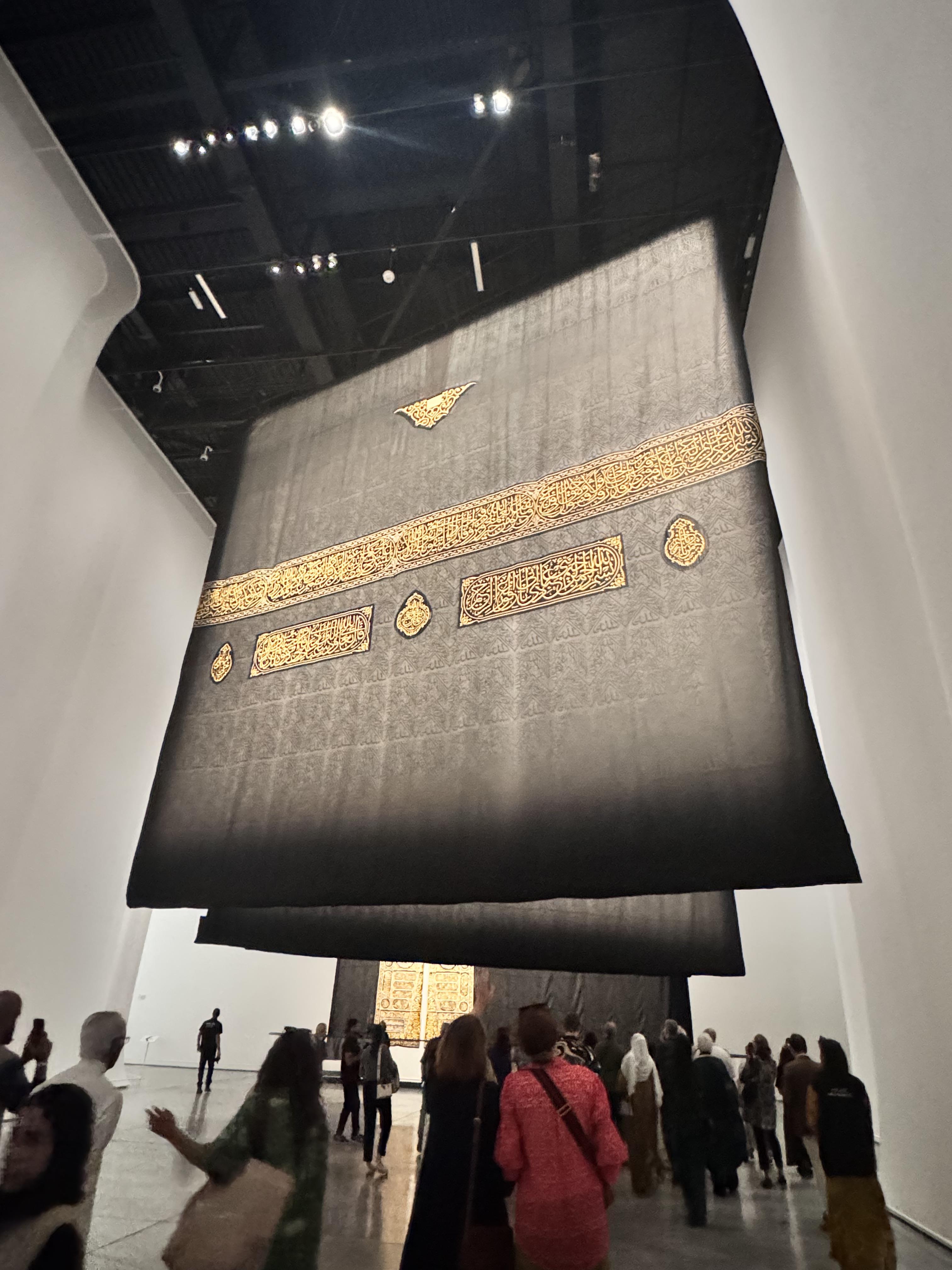
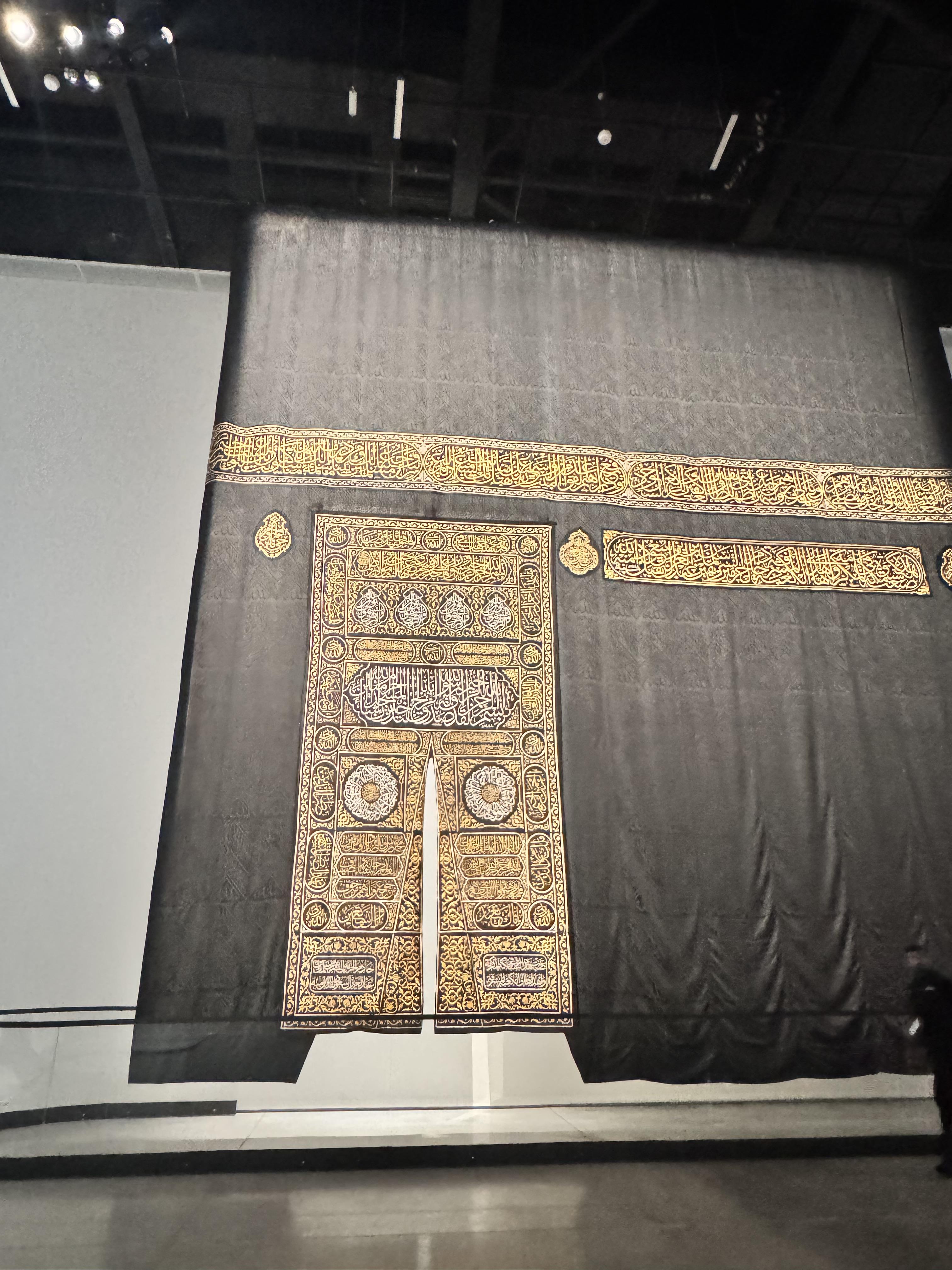
(The Kiswah on display)
My point of view is of someone that isn’t Muslim, but loves this culture, and feels a sense of belonging even though I am not a practitioner. And so having the honour of being in front of this huge religous symbol, hanging from the tall ceiling without being draped over an imitation of the Ka’aba, with its full width visible, was a true highlight.
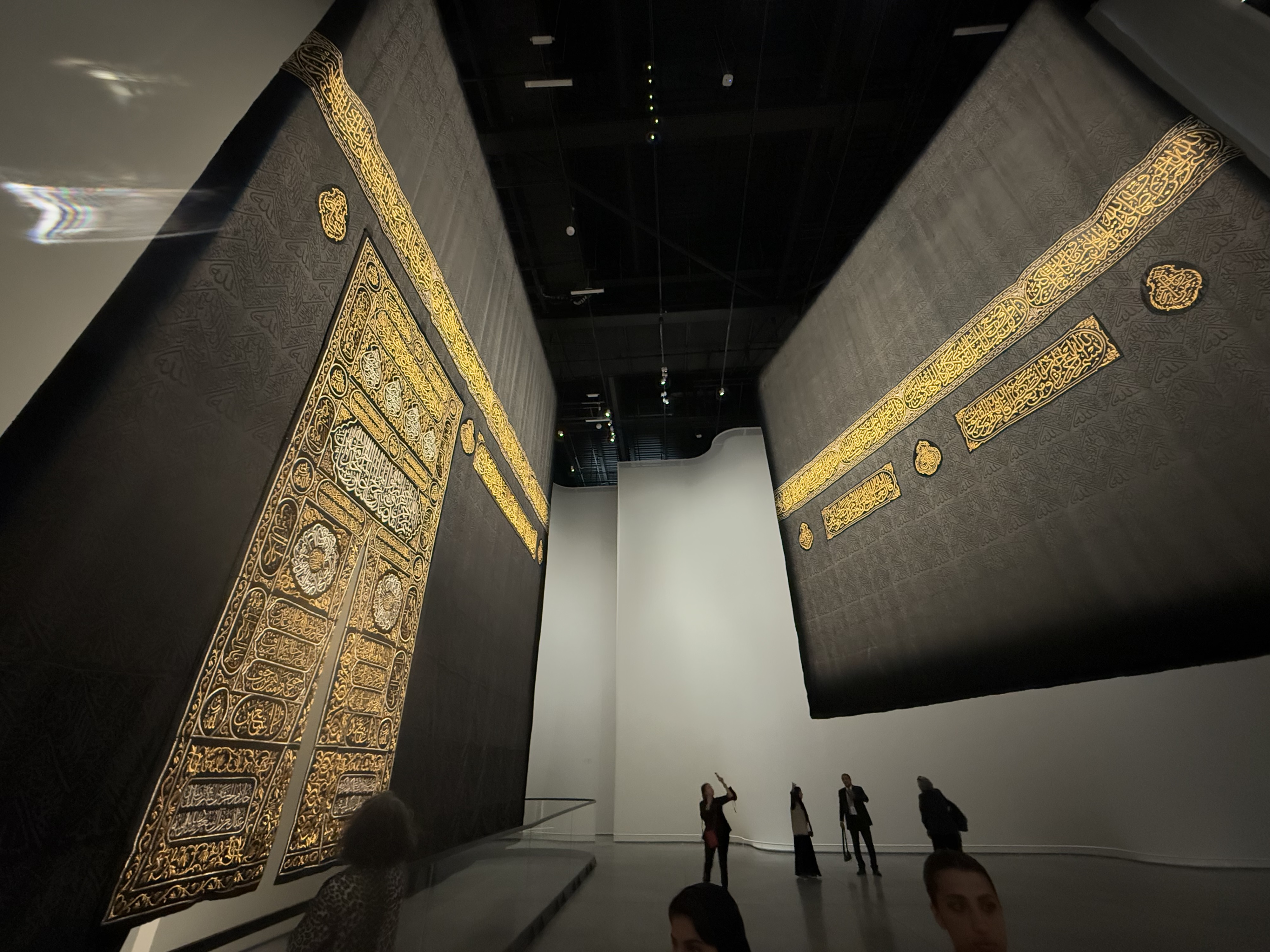
("[the Kiswah] is hung without being draped over an imitation of the Ka’aba, so its full width is visible")
It was quite overwhelming, and a spiritual experience. For non-Muslims passionate about Islamic arts and culture, this was our only chance to see in the flesh a piece of living religious paraphernalia, because we are not allowed to enter the holy ground of the Masjin al-Haram in Mecca, where the Ka'aba is. So for people like me, this is the closest spiritual experience we can have with a powerful religious symbol that brings together the Ummah (the Islamic community).
In short then… make sure you can get to Jeddah before May 25th!
If you would like to get in touch with Beatrice regarding consignment or with other enquiries, reach out at beatrice@azcaauctions.com
Check out our upcoming Islamic and Indian Sales: